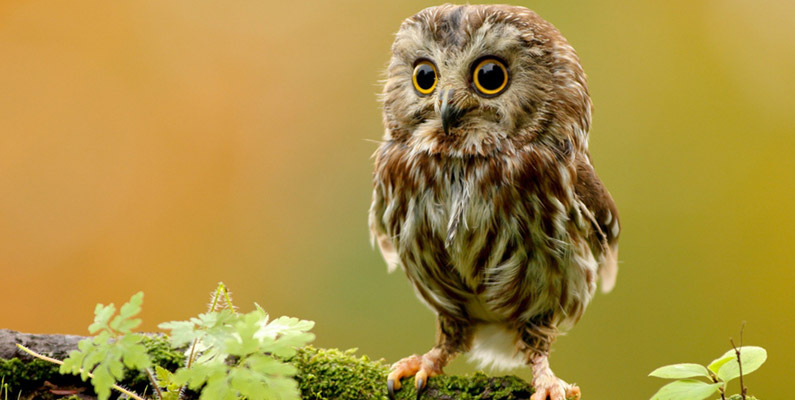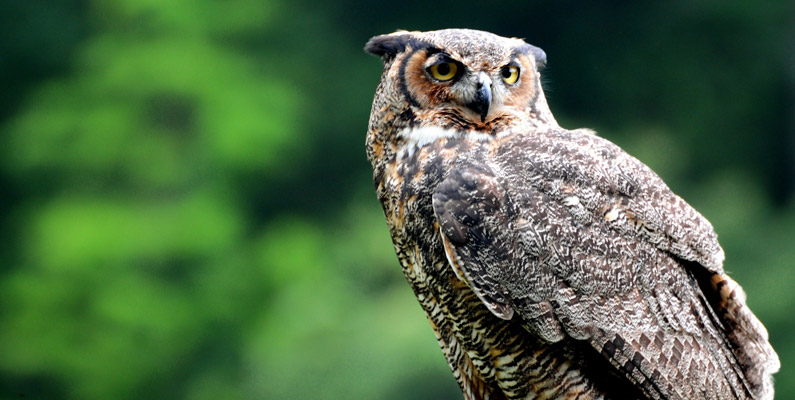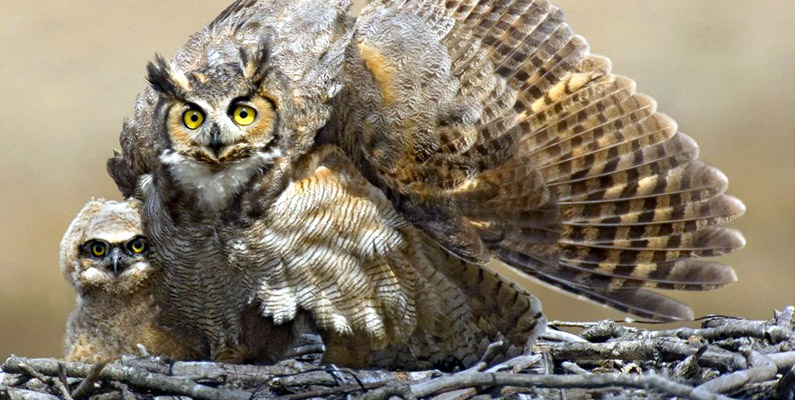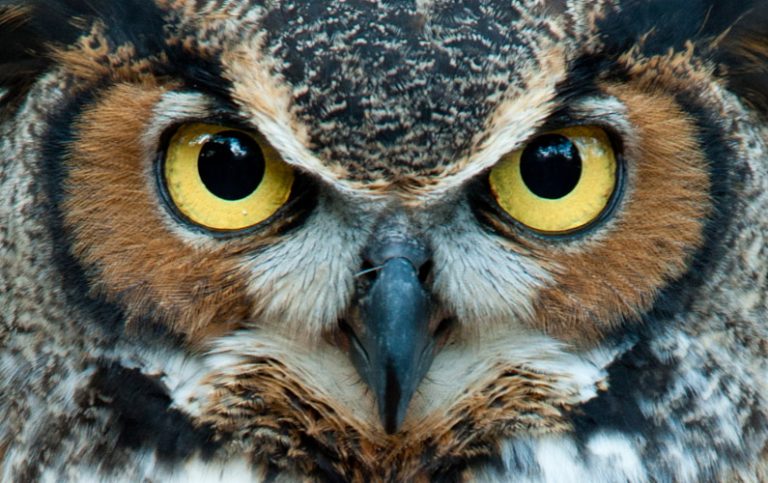Owls (Strigidae) are a family within the order of owl-like birds (Strigiformes). There are 216 different species within 21 genera in the true owl family found around the world. Below are ten facts that you might not be so familiar with when it comes to the wisest bird species of them all.
 Found Everywhere Except Antarctica…
Found Everywhere Except Antarctica…
Regardless of the continent you find yourself on, you can encounter an owl—except Antarctica. In North America alone, you can stumble upon as many as 19 out of the 21 different owl species that exist.
 Have Tube-Like Eyes…
Have Tube-Like Eyes…
An owl’s eyes are not circular like those of most animals; they are instead shaped like small tubes that extend all the way to the back of the skull, giving them a highly farsighted vision. They can spot prey from incredibly long distances. The only downside is that their eyes cannot move at all; instead, they must turn their heads to see.

 An Owl Has Three Eyelids…
An Owl Has Three Eyelids…
Each eyelid has its own function: the first is for blinking, the second is for sleeping, and the third is for keeping the eye clean and healthy.
 A Myth that They Can Rotate Their Heads 180 Degrees…
A Myth that They Can Rotate Their Heads 180 Degrees…
The bones, blood vessels, and supportive vascular system have all adapted so that owls can rotate their heads 135 degrees in any direction they need. The idea that an owl can rotate its head 180 degrees—as you may have heard before—is simply a myth.

 Has a Flat Face for a Reason…
Has a Flat Face for a Reason…
An owl has a fairly flat appearance, and there’s actually a reason behind it. A flat surface enhances sound, up to ten times better. This allows them to hear things that even humans cannot hear! In other words, they have both good vision and excellent hearing.
 Females Are Typically Larger Than Males…
Females Are Typically Larger Than Males…
In most owl species, the female owls are larger, stronger, and more aggressive than the males. They are also usually more colorful, making it easy to distinguish a female from a male.
 Lacks Teeth…
Lacks Teeth…
While most carnivores have sharp teeth for eating, owls completely lack this feature. If they need to break apart their prey/food, they use their talons instead.

 Swallows Their Prey Whole…
Swallows Their Prey Whole…
After seizing and crushing their prey with their talons, the owl will either consume the prey whole or tear it apart depending on its size. After consumption, the owl’s digestive system will compact the indigestible parts (such as fur and bones) and expel it as a pellet.
 Prioritizes Strong Offspring…
Prioritizes Strong Offspring…
Females will prioritize their strongest and oldest offspring. This means that if there isn’t much food available, the younger, weaker, and smaller chicks are less likely to receive any.

 Has Existed for 70-80 Million Years…
Has Existed for 70-80 Million Years…
Archaeologists have determined that owls have existed for at least 70-80 million years based on fossil remains. One of the largest owls they found was the Ornimegalonyx oteroi; it was approximately 90 centimeters (35 inches) tall.

